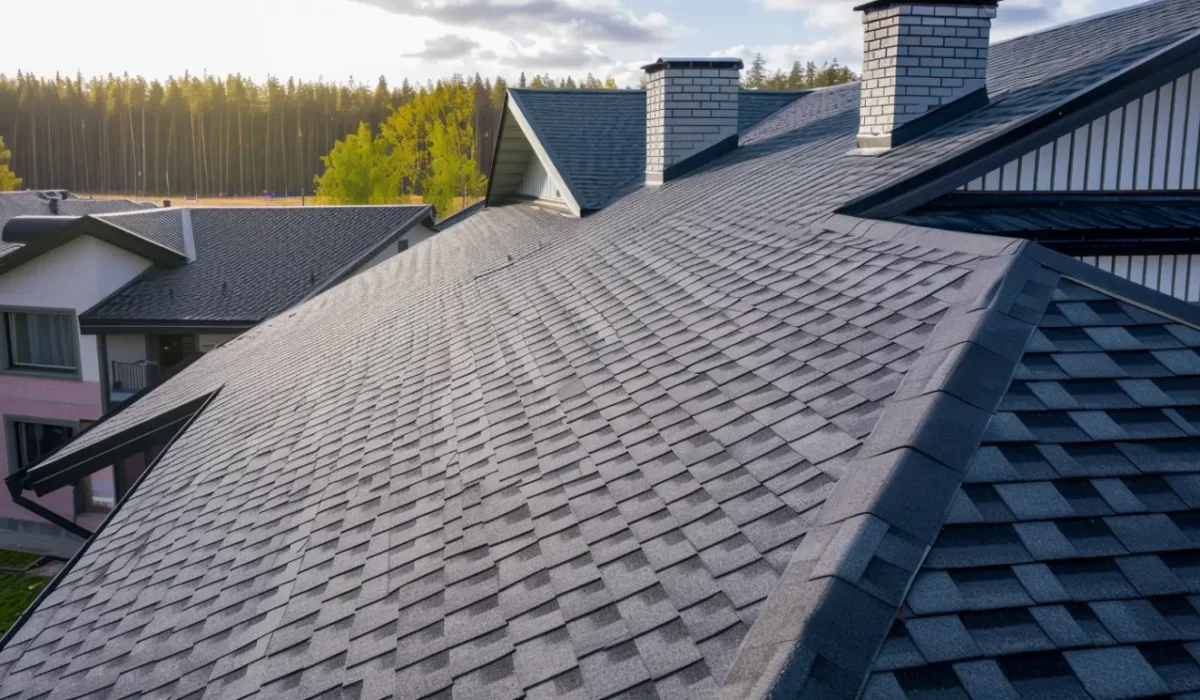Strong winds can wreak havoc on your roof—even when there’s no rain or hail involved. Unlike other storm-related damage that’s often obvious, wind damage can be subtle and go unnoticed until it develops into a more serious issue. Learning how to recognize the signs of wind damage early can save you from expensive repairs and extend the life of your roofing system.
Why Wind Damage Is a Serious Concern
Wind doesn’t hit your roof evenly. Instead, it targets edges, corners, and areas with loose or lifted materials. The higher the wind speed, the more pressure is placed on shingles, flashing, gutters, and soffits. In areas like Coppell, TX, where spring and fall storms often bring gusty conditions, roofs are particularly vulnerable. If you’ve recently experienced strong winds—even without visible storm damage—your roof should be inspected as a precaution.
Common Signs of Wind Damage
One of the first things to look for after a windstorm is missing shingles. High winds can rip shingles right off your roof, leaving the underlying decking exposed to water infiltration. If you notice patches where shingles are gone or hanging loose, that’s a clear indicator that repairs—or even a full replacement—may be needed.
Another red flag is lifting shingles. These may not be entirely detached but can be raised at the corners or along the edges. This compromises the seal that protects your roof from rain. Once water gets beneath a lifted shingle, it can lead to rot, mold, or internal leaks.
Also, pay attention to curling shingles, displaced flashing, and damaged roof vents. Flashing around chimneys and skylights is especially prone to wind stress, and if it’s twisted or peeled away, the risk of a leak increases dramatically.
Subtle Indicators to Watch For
Not all wind damage is visible from the ground. Sometimes, you’ll notice interior signs before you see the damage up top. Water stains on your ceilings or walls can point to a compromised roof. Another indicator is granules from asphalt shingles accumulating in gutters or around your downspouts—this means the shingles have lost part of their protective coating, which weakens their ability to withstand future weather.
If you hear flapping noises during high winds or see a spike in your energy bills, these can also be subtle clues. The noises may be from loose roofing materials, and higher utility costs might result from heat escaping through cracks or gaps caused by wind.
Post-Storm Inspection Tips
After any significant wind event, take a visual walk-around inspection of your home. From the ground, look for signs of roof debris, detached gutters, or pieces of shingles in your yard. You should never climb onto the roof yourself—instead, call a certified roofing professional who can conduct a thorough inspection safely.
Roofing experts like KangaRoof in Coppell, TX, are trained to identify both obvious and hidden wind damage. With certifications like OC Preferred Contractor and CertainTeed Master Shingle Applicator, they provide high-quality assessments and offer dependable repair or replacement options.
How to Handle Wind Damage Quickly
Time is critical after discovering wind damage. Delaying repairs allows water to penetrate the structure, which can lead to costly interior damage and mold. File an insurance claim as soon as possible, especially if you can document the storm and take pictures of the damage.
Choose a roofing contractor who can assist with the insurance process. This ensures that all eligible damage is accounted for and that your roof is restored to its original performance level—or better.
Long-Term Solutions and Wind-Resistant Roofing
If your roof has sustained wind damage more than once, it might be time to upgrade to more wind-resistant materials. Certain modern shingles are engineered to withstand wind speeds of up to 130 mph or more. Some brands also feature stronger adhesives and reinforced nailing zones to provide extra hold in turbulent weather.
When paired with proper installation from experienced contractors, these high-performance materials can significantly reduce your roof’s vulnerability in future storms.
Read also our blog: Red Flags That Signal You May Need a New Roof
